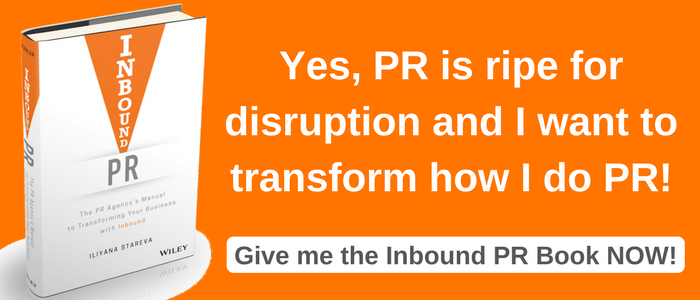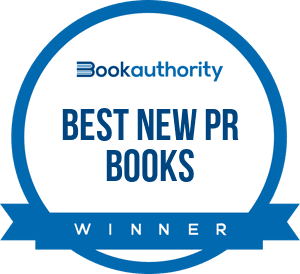 During the last two and a half years, I've worked with about 250 agency partners at HubSpot. I've seen some of them grow immensely and I'm grateful that I've been able to be part of that growth because I've learnt so much together with my agencies.
During the last two and a half years, I've worked with about 250 agency partners at HubSpot. I've seen some of them grow immensely and I'm grateful that I've been able to be part of that growth because I've learnt so much together with my agencies.
From an inbound marketing consultant, I had to become an agency business consultant because eventually the challenges that my agencies who started growing were facing, were far outreaching just marketing. They needed help with their processes and business operations.
Today, I want to share some key learnings from the scale lifecycle stage that all agencies struggle with as soon as:
- they start selling really quickly and have their sales process figured out;
- their CEO wears way too many hats (selling, account management, people management etc) and things begin to fall off track;
- they start hiring more and more people but are struggling with onboarding and training them for the work that they are going to be doing.
If you as an agency are facing these challenges too, the goal of this blog post is to help you get your agency machine up and running not just from an inbound marketing and selling perspective, but really from an operational one.
This is part one of the scale-up agency challenges. I'll give you time to digest this before I publish parts two and three.
When Agencies Start to Scale: 3 Key Learnings & Fixes
1. How Your Organisational Structure Can Make or Break Your Time
Whenever I do an onsite - I go to visit an agency at their office for a day or two for custom consulting - I always start with their organisational structure. Mapping it allows me to understand how they organise the work and who is responsible for what within the team (e.g. project management, content, social, website etc). Without doing this first, none of the rest (e.g. new hire training, service delivery) would make sense for me.
But even without having a consultant there, writing your organisational structure on the board once or twice a year is very helpful for a simple reason: your agency changes. You hire new people who take on existing or new responsibilities, your more senior people do so too, you add more services or products, you adjust your processes and operations.
Especially when you start hiring a lot of people, the org chart allows you to look closer at what each individual on your team does and by analysing it, eliminate inefficiencies or reassign tasks. For example, when you hire experienced account managers, you can give them the big clients to handle and take them away from a more junior person.
You might also find that you have roles that are completely unnecessary now that you've hired e.g. an account manager, a sales person etc. So you can have these people focus on new things to spend their time better.
Or when we flip this, it might help you see gaps. For example, you only have one account manager to handle all clients and you have 20 of them now, so it just definitely makes sense to hire another one. Or your copywriter is sort of doing SEO but that's becoming too much so maybe you should be getting someone to specialise exclusively in SEO.
The org chart also enables you to see who reports to whom. Often, that would be the CEO who would be the people manager for everyone. But as soon as your team grows to above 10 people that also becomes impossible. The CEO has a very different focus and responsibilities then. Yes, maybe managing the senior positions and people, but for the rest, he/she would need to find someone else who can play the role of a coach and career developer.
Key learning: Agencies need to be intentional when assigning work. They need to ensure that they are distributing the correct amount of work to the appropriate person and role and reduce time inefficiencies as much as possible. At the end of the day, time really is money in the agency business and the org chart allows you to not waste it.
2. How to Be Super Clever With Your Service Packages
The coveted 12-month retainer is the dream for any agency. The client wants us for full 12 months!
I hate to break it to you but few clients are ready to sign such a long-term agreement, especially if it's something they've never done before, for example inbound marketing. Frankly, they are just cautious with their money and they want to see results first before they can agree to something like this.
Handling this and keeping your clients for the long run lies in the way you define your service packages.
It takes a bit of time and experimenting with this, however, I've found one thing to work quite well with agencies that start to grow through existing client success. It has three phases:
- In the sales process, starting with one fixed service package that includes the strategy and a plan with e.g. background, goals, challenges, first draft of buyer persona and buyer's journey etc. Some call this a Game Plan. The purpose of this is to get to know each other and work together before signing a contract. Also, to dig into the challenges and goals and ensure that the agency has the capabilities to deliver. On the client side, if they're happy with the plan and want to continue, they move to the onboarding phase; if they don't want to or choose to do it on their own, then the agency at least has gotten the deserved money for their work instead of doing this for free.
- Once the plan is done and the client is happy with it, they move onto onboarding - usually the first three months which should also be a fixed post-sale priced service package that includes all the initial things that needs to be done, like technical and social, content plans, content audits, designs, training the client, meetings with client etc. that enable digging into the issues and the first steps of the plan of action. Why should this be separate than a normal retainer? Because these are the most intense months of an agency-client relationship and agencies tend to lose money here because they would inevitably end up overservicing.
- With the onboarding phase done, you can step into a normal retainer package and ongoing client management. Again, instead of full 12-months, I recommend quarterly sprints. Each quarter, the client can renew with the agency. What this makes both parties do, is to look at results on a regular basis and discuss goals and achievements to ensure that this engagement is a win-win scenario. For agencies, success reporting is extremely important and with 12-month retainers, this tend to happen towards the end of the retainer instead of regularly and so the client gets little visibility into all the things the agency has done for them. Here, I'm not talking tactical things like social media campaigns run but actual value - how much money have you helped the client make. These C-level conversations should be happening quarterly and that's why quarterly ongoing service packages are so beneficial. In addition, when you are doing great work, you have each quarter set to discuss the next possible steps for the client and sell more services depending on where they are going, for example, if they have another buyer persona or business unit, that can be a paid add-on if you're doing well with the first one.
Key learning: In order to deliver real value, agencies need to build service packages and retainers that clients would feel comfortable with. Agencies need to be strategic but also creative with their retainers to ensure that their market responds positively to them rather than have them feel like they are signing just another 12-month binding agreement. At the same time, though, agencies need to build a retainer model that allows them to retain clients for the long term. Only so will they manage to build a sustainable and scalable business.
3. How to Onboard and Train Your New Employees
Admittedly, hiring is a challenge in itself. But when you get people through the door, training them properly so that they do the work well and they also love it, is an even bigger challenge in my experience.
What's more, agencies don't proactively think about this. Usually, this is what happens: you hire someone and you just figure it out when they start based on whatever the projects or needs are right now. This person then has little direction and understanding of why they're doing what they're doing. Everything is too ad-hoc. The lack of structure kills progress and results.
One thing that we do at HubSpot really well is to put each and every individual that joins us through a rigorous training during month one before they even start doing their actual job. And that's for everybody that joins, including execs.
Now, you as an agency don't have to do this but you do need a formalised process for training new hires. Especially in the world of inbound where you would probably be hiring more junior people because they aren't many senior ones that are already experts at inbound and if you were to find them, they'd probably cost you too much.
So, how do you onboard and train new hires to give them the skills and tools to excel at their roles as quickly as possible? The easiest way to do this is to map out the lifecycle of the role.
The first six months would usually be enough and you need to start backwards. Figure out what everyone in this role needs to know and be able to do at the end of month six. What is the ideal scenario? What are the things they should be able to do autonomously and execute perfectly?
Then go back to months one, two, three, four and five and figure out the exact same thing for each month: what is it that they need to know and be able to do by the end of each month?
This will give you cues as to what you need to train them on, give them exposure to and most importantly, how you are going to measure it. For example, if it's an account manager, you may need to teach them the lifecycle of your clients from pre-sale to renewal, the process you have for this, you may need to expose them to client meetings and calls in month one. In month two you can have them be in charge but with your supervision. In month three, depending on how they are doing (e.g. the way the run the meetings, they delegate tasks to the team, take notes, run your process etc.), you can fully hand your clients over.
New hires and generally any person in your team wants to know how they're doing. If you provide them with clear KPIs, they can see on their own how they are tracking against the work that they're doing, the quality of it and their learning and performance progress.
Key learning: Agencies don't really think further enough about what each team role entails on a monthly basis and where each of the team members is going. Agencies should clearly map out the lifecycle of each individual role. This way, they will not only know what's expected of new hires at various points but they'll be able to provide them the correct training and resources when these are truly needed. In addition to that, employees will know what their milestones are and where they currently are towards reaching them.
What are the challenges that you have faced as an agency starting to scale?







